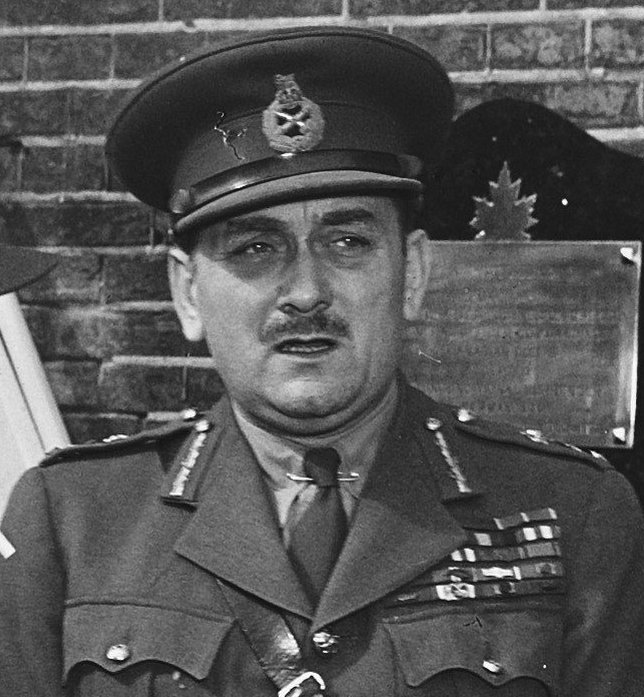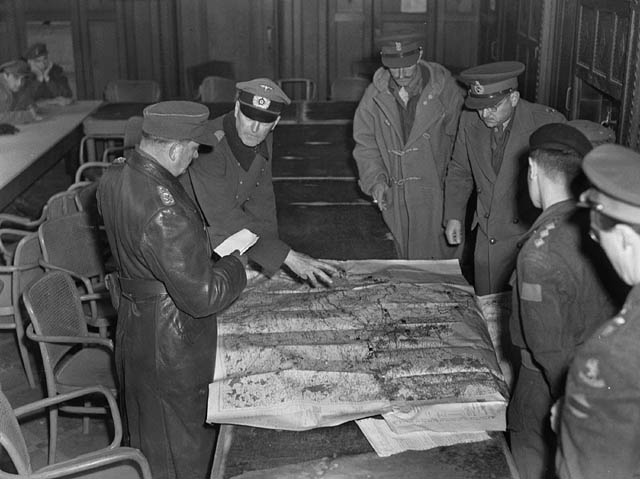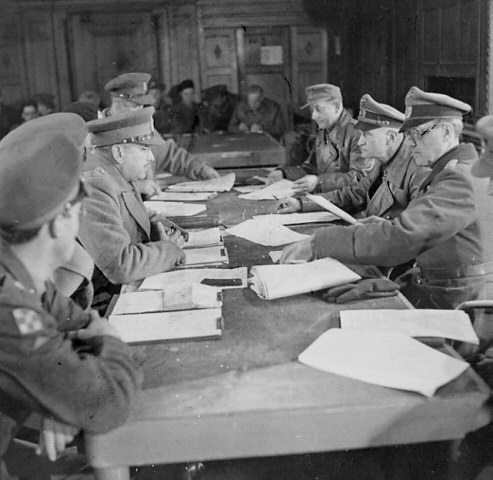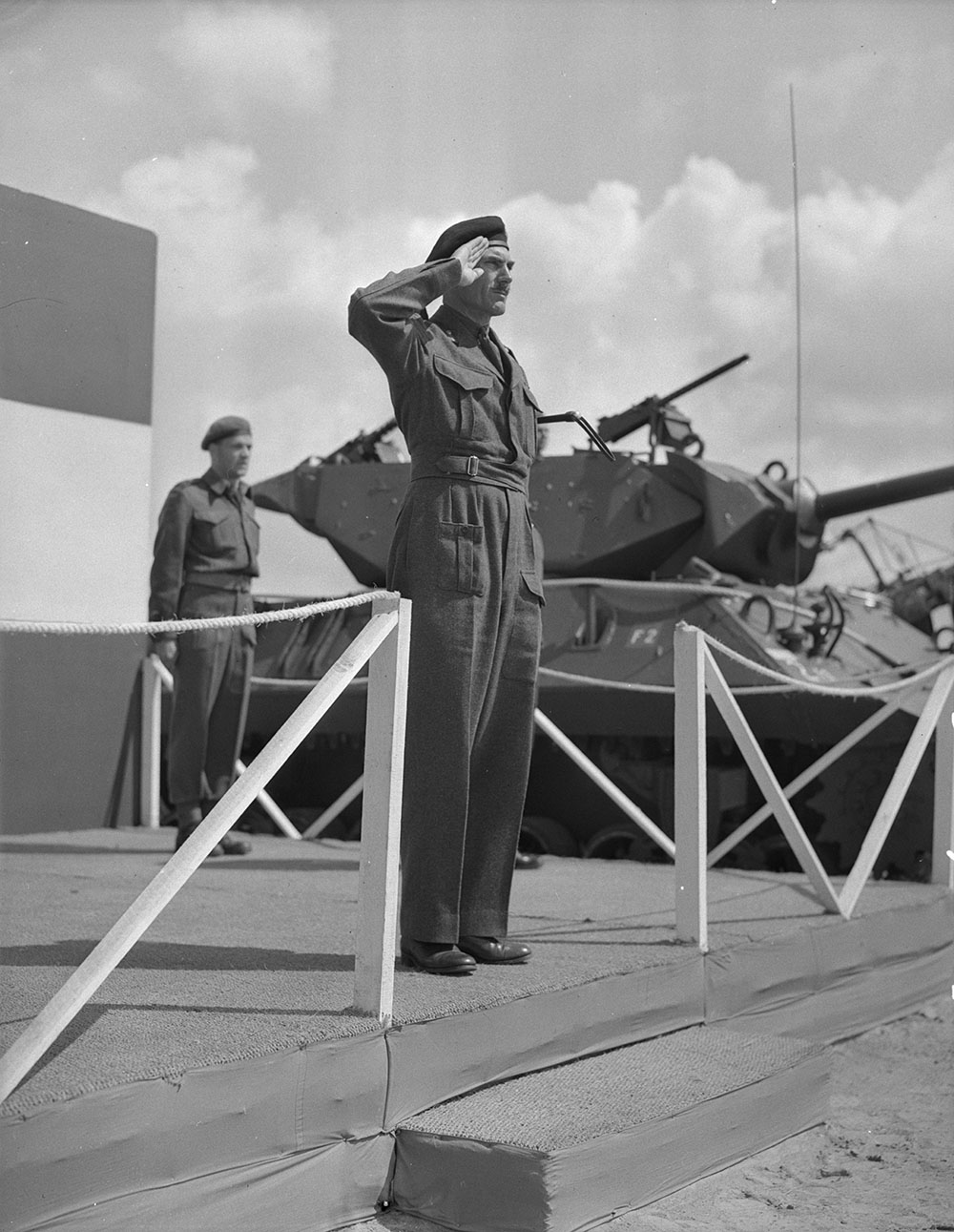Charles Foulkes, CC, CB, CBE, DSO, CD, infantry officer, general (born 3 January 1903 in Stockton-on-Tees, England; died 12 September 1969 in Ottawa, ON). Foulkes began his military career in the militia before joining the Permanent Force. He spent several years as a junior officer until the Second World War, when he progressed rapidly to lieutenant-general. Foulkes remained in the army after the war and became chief of the general staff (CGS) and the first chairman of the chiefs of staff committee. Although sometimes criticized for a lack of leadership and inconsistent performance on the battlefield, Foulkes’s capabilities improved at each level of command.

Early Life and Education
Charles Foulkes began his primary education in Britain and immigrated with his family to London, Ontario. He completed secondary school at the London Collegiate Institute. On graduation, he enrolled at the University of Western Ontario but only completed his first year.
Regimental Duty
In 1922, while a student, Charles Foulkes joined the militia in the 2nd Canadian Machine Gun Battalion. He quickly qualified as a sergeant and was commissioned second lieutenant on 1 October 1923. The next year, he qualified as a captain and instructor on the machine gun.
In early 1925, Foulkes applied to join the Permanent Force; that summer, he served as an instructor at the Small Arms School. He entered the long course at the Royal Military College of Canada, intended for non-graduates of the college who wanted to become Permanent Force officers. On completion, Foulkes was posted to London, Ontario, where he joined C Company of the Royal Canadian Regiment as a lieutenant on 11 August 1926.
In 1931, Foulkes took an instructors’ course in small arms. He was promoted to brevet captain on 1 July 1931 and attended British small arms courses in the summer of 1932. While in Britain, Foulkes married Phyllis Beck. Back in Canada, he continued to use his specialized small arms training as an instructor and was promoted captain on 1 November 1935.
Foulkes served as General Staff Officer Grade 3 (GSO 3) at various military districts in Ontario. He also attended the two-year British Army Staff College from January 1937 to December 1938 and then returned to Canada.
Second World War
When the Second World War broke out on 1 September 1939, Charles Foulkes was GSO 3 at Military District No. 2 in Toronto. The next day, he was promoted major and appointed GSO 2 at Military District No. 1 in London, Ontario. A year later, he was promoted lieutenant-colonel and posted as GSO 1 at 3rd Canadian Infantry Division. The formation of the division had been authorized in May 1940 after the German invasion of the Low Countries and France. It sailed to Britain in the summer of 1941.
Britain
On 15 December 1941, Charles Foulkes was appointed commanding officer of the Regina Rifle Regiment while its commanding officer attended a senior officers’ course. He led the battalion on several anti-invasion exercises along the southwest coast of Britain.
On 1 August 1942, Foulkes was promoted brigadier-general to take command of 3rd Canadian Infantry Brigade, bypassing the rank of colonel.
At the time, the Canadian army in Britain was training for a cross-channel invasion, including individual weapons training, field firing exercises with live ammunition and combined operations. Two days after Foulkes assumed command, his brigade conducted an exercise with Churchill tanks of the Calgary Regiment, supported by three regiments of field artillery firing live ammunition over the troops’ heads.
The training for the Calgary Regiment was prophetic. At Dieppe two weeks later, it became the first unit of the Canadian Armoured Corps to go into action. Only 27 of its tanks landed on the beaches; none of them returned to Britain.
Foulkes moved to First Canadian Army Headquarters in April 1943 as the senior staff officer in the headquarters. First Canadian Army had come into existence a year earlier under Lieutenant-General Andrew McNaughton.
In July, military authorities chose 3rd Division to participate in the first phase of Operation Overlord, the invasion of Northwest Europe. While that division prepared for its mission, the rest of the army undertook intensive unit training from battalion to corps level, including radio exercises, infantry-tank cooperation, street and night fighting and administrative training.

Northwest Europe
Charles Foulkes was promoted major-general on 11 January 1944 to command 2nd Canadian Infantry Division. The division had only completed rebuilding less than six months earlier after the disastrous Dieppe Raid of August 1942. The month after Foulkes arrived, all three of his brigade commanders were replaced.
Foulkes landed in Normandy with his division during the first week of July, following the assault landing of 3rd Division on D-Day. His division was introduced to combat during operations to capture Falaise.
Foulkes successfully led 3rd Division through these battles and in September turned his attention to opening Channel ports to allow much-needed supplies to reach the Allied forces. The division entered Dieppe unopposed, then moved on to Dunkirk while other formations opened additional ports.
In mid-September, Foulkes was directed to make for Antwerp to assist in opening the vital port to Allied shipping. His division cleared the Albert Canal near Antwerp on 4 October, then headed northwest toward South Beveland and Walcheren Island. These areas controlled the German-held north bank of the Scheldt Estuary, which Allied ships needed to reach Antwerp.
On 28 September, Foulkes became acting commander of II Canadian Corps. He replaced Lieutenant-General Simonds, who had been moved up to command First Canadian Army during the temporary absence of Lieutenant-General Crerar for medical reasons.
Foulkes successfully led II Corps through the rest of the Battle of the Scheldt. It was fought against stubborn German resistance under appalling conditions of terrain that favoured the enemy. On 28 November, the port of Antwerp was opened to Allied shipping, an essential victory for the final thrusts into Germany and to liberate the Netherlands.
Italy
On 10 November 1944, Charles Foukes was promoted lieutenant-general and sent to Italy to command I Canadian Corps. (See Canada and the Italian Campaign.) He took over the corps on 16 November, replacing Lieutenant-General Tommy Burns, who had lost the confidence of both his British superiors and his own subordinates.
When Foulkes arrived in Italy, the corps had been in reserve since the end of October. In addition to necessary rest and relaxation, the corps had been training for future operations and the introduction of new equipment.
I Canadian Corps returned to the line on the night of 1–2 December, began an attack on 2 December and quickly captured Ravenna. The advance continued, and by 5 January 1945, the corps had established a new front line along the Senio River.
The Canadians remained in static winter positions until the long-awaited reunion with Canadian units in Northwest Europe was announced on 4 February. Operation Goldflake, the move of I Corps from Italy to Northwest Europe, began on 13 February and ended on 3 April.
Northwest Europe — Again
Under Charles Foulkes, I Corps participated in some of the war’s final operations. Its mission was to liberate the western Netherlands north of the Maas. The Germans still occupied the area, and its Dutch population was suffering from starvation and other deprivations. (See Canada and the Dutch Hunger Winter.) The division cleared Arnhem by 14 April and then occupied Apeldoorn on 17 April.
The Allies could not spare many additional resources to help Foulkes break through the new German defenses, known as the Grebbe Line. His two divisions and an armoured brigade faced a 120,000-man strong Twenty-Fifth German Army. Information from behind the German lines, however, indicated a truce might be possible to get supplies to the starving Dutch.
Accordingly, the two sides arranged a truce on 28 April, and hostilities ceased in the western Netherlands. Allied bombers began dropping food the next day, followed by truck deliveries on 1 May. On 5 May, Foulkes accepted the surrender of General Johannes Blaskowitz, commander of the Twenty-Fifth Army.
Postwar
Charles Foulkes was appointed chief of the general staff on 21 August 1945 over his senior, Lieutenant-General Guy Simonds. On 2 January 1951, he was promoted general and became the first officer to hold the appointment of chairman of the chiefs of staff committee. In this appointment, he was responsible to coordinate the three services and provide single-source advice to the minister of national defence.
In those appointments, Foulkes helped guide Canada’s military policy through major postwar events such as rearmament, the establishment of NATO, the Korean War and the nuclear arms race. (See also Canada and the Cold War.) While chairman of the chiefs of staff committee, Foulkes also became the first Canadian to chair the NATO Military Committee in Chiefs-of-Staff Session and served from 1952 to 1953. This appointment is NATO’s senior military officer and today is known as Chair of the NATO Military Committee.
Retirement
Charles Foulkes was a continentalist who advocated closer ties with the United States. He resigned on 28 April 1960 in opposition to the non-nuclear policies of the government of John Diefenbaker. Foulkes taught strategic studies at Carleton University from 1968 to 1969.

 Share on Facebook
Share on Facebook Share on X
Share on X Share by Email
Share by Email Share on Google Classroom
Share on Google Classroom




